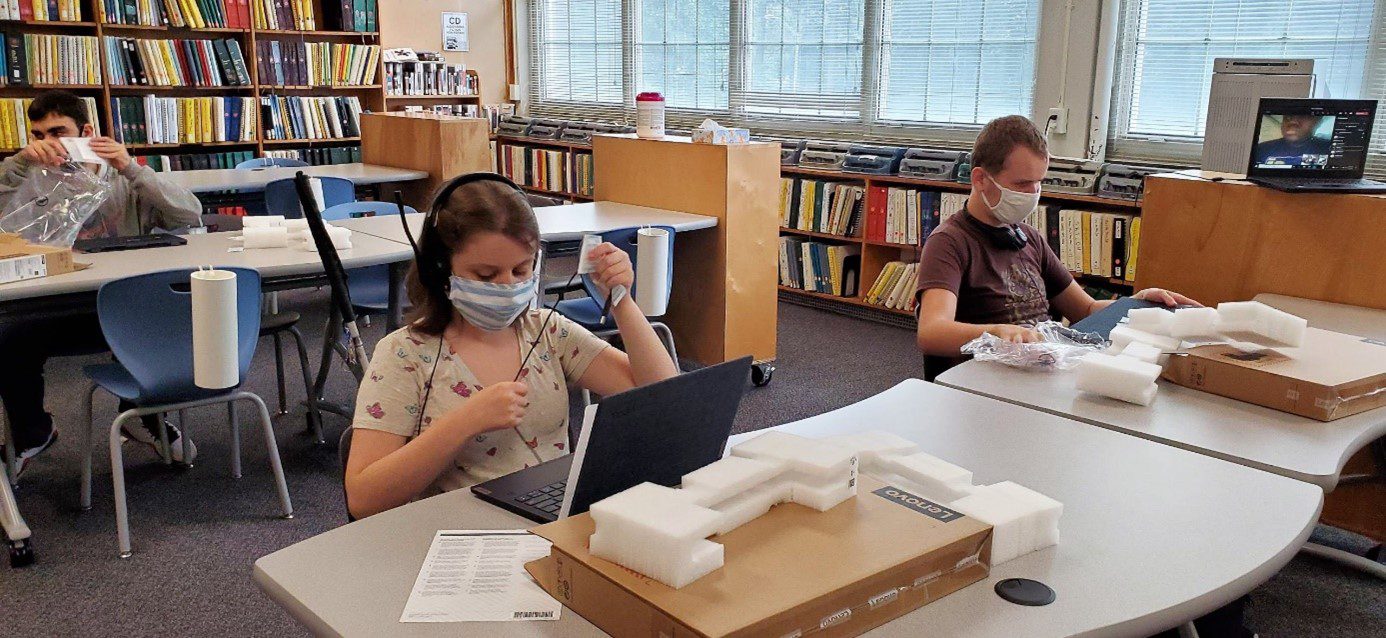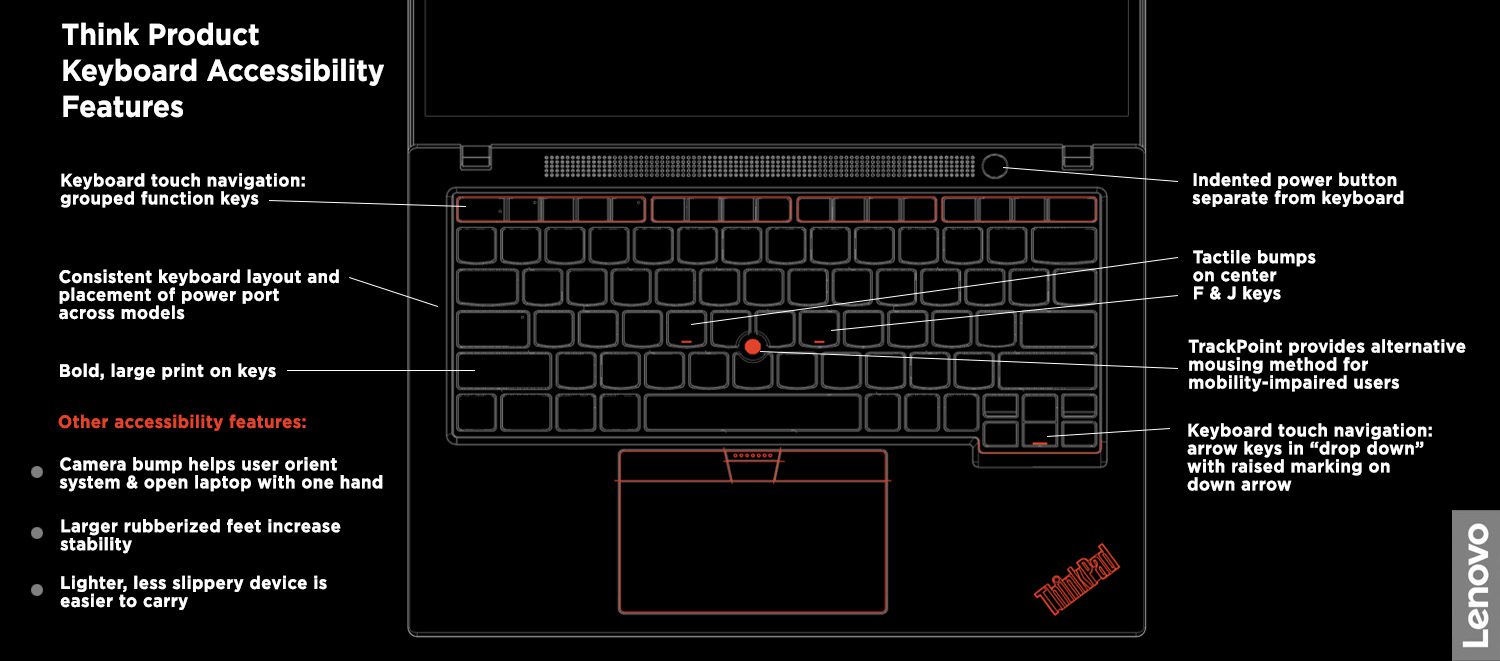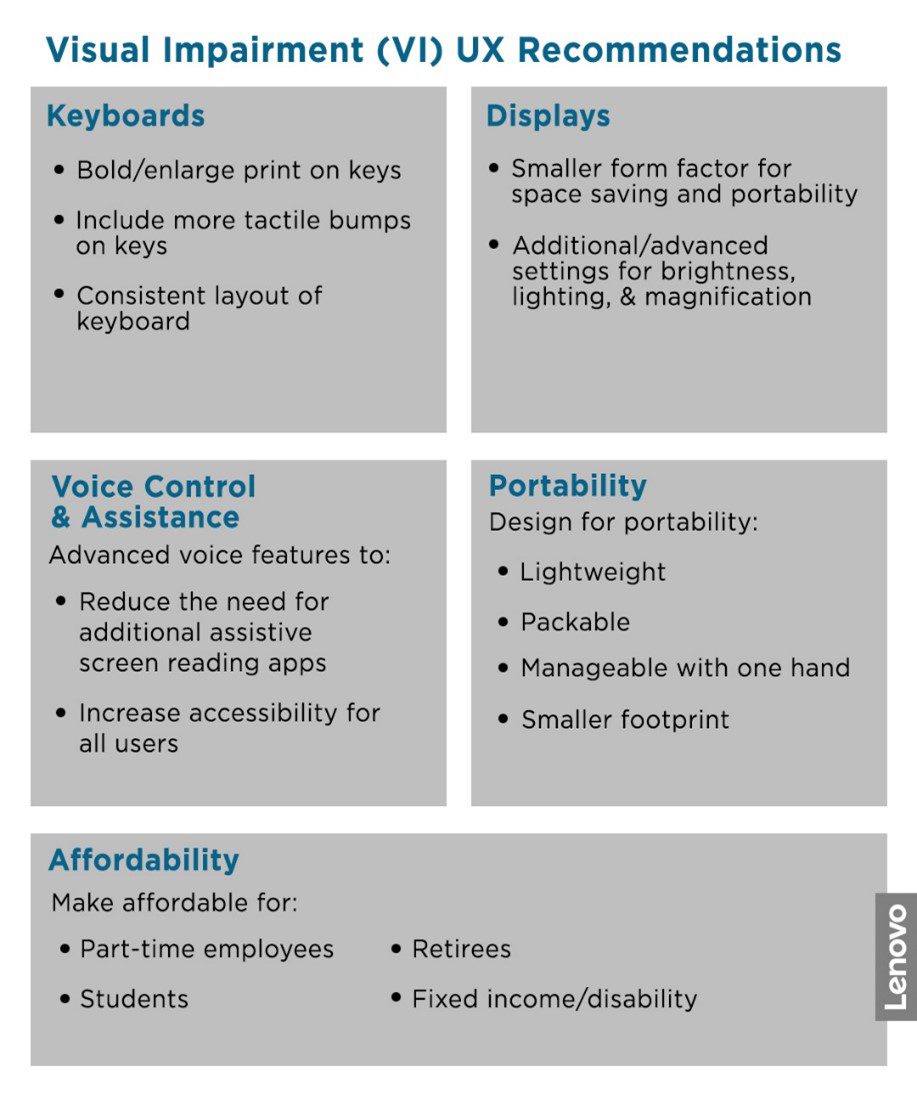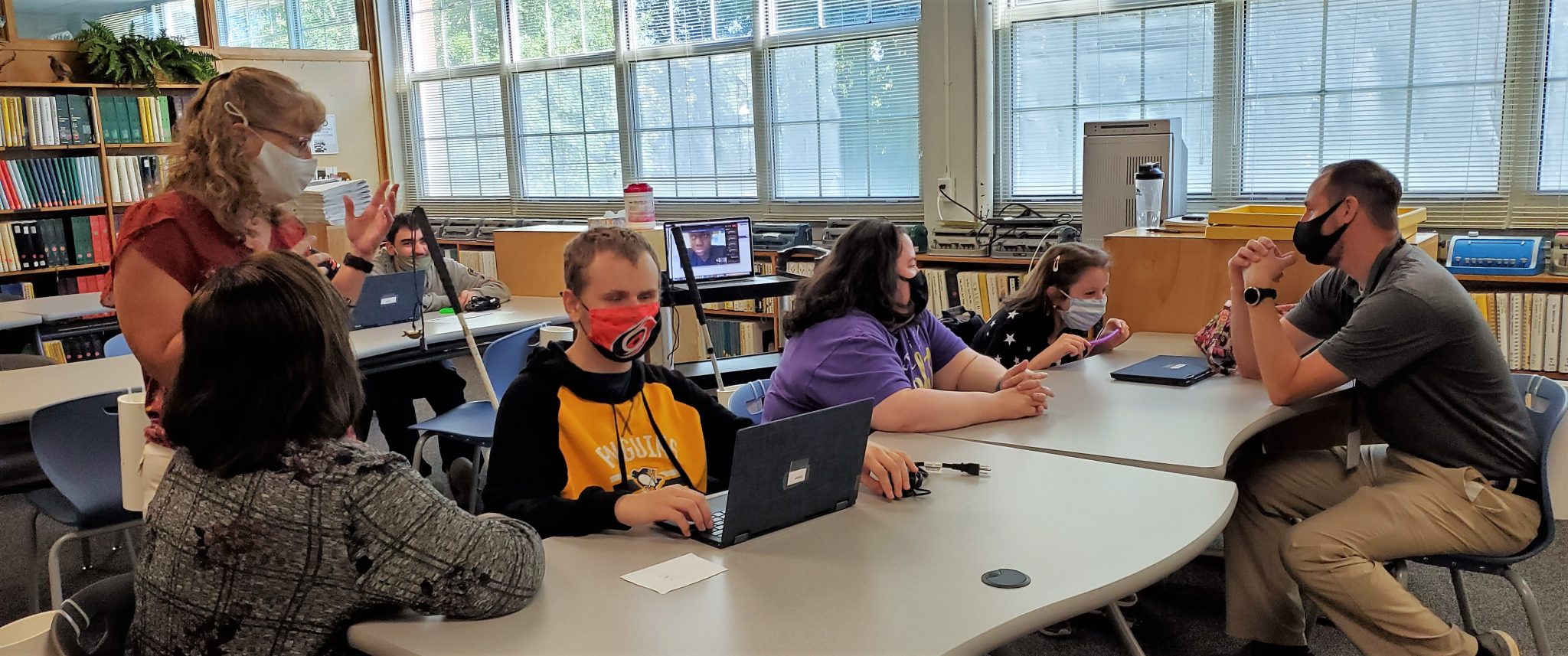Lenovo’s commitment to responsible and more sustainable innovation is fueled by a greater purpose to provide smarter technology for all.
Here’s a compelling reason to design a product that solves a problem – even if it starts as just for a select group of people: You might create something that benefits everyone. My favorite example of this is the creation of a digital tool that we can sometimes take for granted – email.
Vint Cerf is one of the “fathers of the Internet.” He is also hard of hearing. Life in the early days of networked electronic mail, what we now call email, was very different from today. Its development with Vint’s help meant a boon for diminishing the effects of deafness by replacing uncertain voice calls over long distances with the clarity of text. No more straining to hear over the phone.
People with and without hearing impairments benefit from email, making it a fine example of innovation driven by inclusive product design. It’s no wonder email is still one of the most popular communication channels in the business world today. The internet is undeniably a transformative technology, spurring countless innovations like email that have changed how most people all over the world live and work. Just think of all the TV/streaming viewers that now benefit from subtitles even if they’re not d/Deaf or hard of hearing.
A few Lenovo PC examples come to mind, such as, by adding haptic feedback to signal device notifications and auditory feedback for mute and lock keys, our users no longer have to merely rely on visual cues which benefit everyone, not just the visually impaired.

Diversity and Inclusion Increase Innovation
If you embed diversity, especially disability perspectives, into the design of your products and solutions, you can increase innovation and build empathy with your customers.
Ensuring diversity, equity, and inclusion (DE&I) are embedded in your product design and development process requires organizational discipline and a customer-centric culture. At Lenovo, we introduced this discipline through the creation of the Product Diversity Office (PDO).
To help everyone understand how a ‘product diversity’ authority, such as the PDO, can help you put diversity at the heart of any design process, I chatted with my colleague Ada Lopez, who manages our PDO.
Lenovo’s Product Diversity Office (PDO) Promotes Inclusive Product Design
Dilip: Hello, Ada. How would you describe the mission of Lenovo’s PDO and the role it plays?
Ada: Hi Dilip. Quite simply, the mission of Lenovo’s PDO is to ensure the products we develop are usable for a diverse customer base. In practice, this means identifying and minimizing any bias inherent in a product. We’re constantly pushing development teams to design ‘for all’ without leaving groups behind.
Dilip: How can bias manifest in a product?
Ada: A simple example is a keyboard. People with a visual impairment value a consistent keyboard layout because they know from continual use and muscle memory where the keys are located. If a new keyboard is developed that changes the layout, we introduce bias by excluding users with a visual impairment who will struggle to adapt to the new layout.
Dilip: How does Lenovo’s PDO identify or minimize biases in product development?
Ada: We seek feedback from as diverse a group of users as possible, even early in the product development process. We also undertake in-depth user research projects to help developers and designers increase the accessibility of Lenovo products.
Dilip: I know the PDO, in partnership with our Insights team, recently performed research to help us better understand how people with Visual Impairment (VI) use technology for work, learning, and day-to-day tasks. What insights did you gain from that research?
Ada: Some of our key insights were with respect to how some individuals with VI rely on multiple types of devices to aid them with their visual impairments. Portability and affordability are important for users who work and/or learn in different locations. While displays were more important to low vision users versus those with central vision loss, smartphones were considered by all to be more accessible than their computers. Voice command and talk-back were also the most desired features for an ideal device.
Dilip: What user experience (UX) design recommendations can we glean from this research?
Ada: Some of our UX recommendations for inclusive products for the VI community are enlarging print and adding more tactile bumps on keyboards like the ThinkPad’s signature TrackPoint button, building advanced voice-command features into our technology, and designing for portability.

Dilip: User research is invaluable. However, it takes considerable time and planning to do it right. What if our product teams want to explore a new idea before user research commences? How do they know their idea does not exclude anyone before anything is created?
Ada: Excellent questions. When our product teams begin the exploration stage, they must complete a self-assessment form to determine if the technology they plan to implement is deemed “high-risk” for those with specific needs.
Dilip: What are examples of “high-risk” technologies from a diversity and inclusion perspective?
Ada: High-risk technologies include AI algorithms, facial recognition, voice input, new interfaces, or anything mounted on the head and body, such as headphones, AR glasses, and wearables. Bias can creep into these categories because they tend to rely on uniform experiences rather than diversity of experience.
Dilip: Obviously there is potential for these high-risk technologies to benefit all users. How does the PDO guide their development after self-assessment?
Ada: Once a self-assessment form is completed by a product team, it is presented to Lenovo PDO’s Diversity by Design Review Board which is made up of executives. The review board decides if the product has had sufficient testing. If not, the PDO Research team conducts additional research (by moderating user testing and in-person interviews, etc). Findings and recommendations are then shared with the product team. This includes any required remediation plan.
Our Users Benefit from Our Diversity by Design Discipline – As Do Employees
Dilip: So, planning and research early on is preferable to trying to ‘fix’ something afterward?
Ada: Yes. You really can’t retrofit the accessibility of a product; for companies to avoid pitfalls and ensure regulatory compliance, diversity assessments must come at the beginning of the innovation process at the concept stage. That’s why the User Experience (UX) team invests in the training of its designers on how to effectively engage with development teams upfront so that it becomes instinctual to question each anticipated feature, such as: How closely it aligns with the Lenovo brand and company mission? Can it be developed cost-effectively? Is there a need? Who would (or could) benefit from this feature?
Dilip: How would you respond to the idea that being disciplined about “Diversity by Design” limits innovation?
Ada: Research supports that organizations that cultivate inclusivity are 6x more likely to be innovative and agile and 8x more likely to achieve better business outcomes. So not only is it the ‘right’ thing to do as a corporate citizen, but it makes good business sense when 70% of Millennials and Gen Z are more likely to choose one brand over another if it demonstrates inclusion and diversity via its promotions, products, and solutions.†
Dilip: Those are encouraging statistics. It’s a testament that our PDO is focused on making diversity and inclusion a design feature rather than an afterthought.
Ada: Yes, and from a marketing perspective, Millennials and Gen Z represent the largest group of consumers, and at least 2.2 billion people worldwide have some sort of visual impairment.† Just so many people are impacted by a disability or know someone who is; it’s a reason why employees are passionate about engaging with Lenovo’s Product Diversity Office. Just take the PDO’s innovation process that started by crowdsourcing ideas through a Call to Action posted online and in our internal newsletter. Employees from across the company submitted inclusive ideas/concepts into our annual PDO Showcase that we then workshopped and vetted with our Employees Resource Groups (ERGs) for cultural sensitivity.
Dilip: You mentioned employees, since customer experience (CX) and employee experience (EX) are closely related, how is Lenovo making strides for a stronger inclusion of diverse people, including those with disabilities, in our own workforce?
Ada: Lenovo’s diverse team of people and offices means greater collaboration and sharing across abilities, borders, gender, age, and backgrounds. This is a value proposition that attracts the best talent to work at Lenovo. Lenovo believes if you create an environment and a company culture built on respect for people, it fosters best practices in every sector including taking tangible actions to achieve disability inclusion and equality. In our annual Lenovo Listens employee engagement survey, employees share their perspectives on how we’re doing with inclusion and productivity measures at the company.
I think it’s important to keep in mind that any initiative the PDO introduces is to ensure technology contributes to an inclusive future. When you center diversity in your design process, you’ll come up with new solutions that benefit both people with disabilities and people without, as well as both customers and employees. Inclusive solutions benefit the entire community.
Dilip: Great point. What’s next for Lenovo’s PDO?
Lenovo’s 3-Year Diversity by Design Goal
Ada: The PDO is researching ways to support people with hearing impairments or loss. It’s only by truly understanding their experiences, can we better educate product teams on how they might address these challenges with innovations, such as hearing-assisted technology and new sign language applications.
Dilip: Lenovo’s vision is to deliver “Smarter Technology for All.” The “all” part of that vision only happens with an increased focus on diversity, equity, and inclusion in the product design process. Does our PDO have a defined goal or target in mind to help Lenovo realize our “Smarter Technology for All” vision?
Ada: Yes. By 2025, Lenovo’s goal is to have 75% of its products vetted for inclusion by design experts to ensure our products meet the needs of people from all backgrounds and abilities. With just three years to meet this goal, we have a considerable amount of work ahead of us. I’m optimistic and excited that we can help the whole organization implement the Diversity by Design Process, so we all reach this goal together.
Dilip: We have learned a great deal from Lenovo’s product diversity journey. Ada, what are five things companies should do to create their own version of a PDO?
Ada: First, answer this question: What specific problem is my company trying to solve? This will be organization specific.
Second, dig a bit deeper and identify the diversity issues that put your company at risk. Obviously, these take priority.
Third, work with key stakeholders to set clear, objective, and measurable goals and KPIs. Also, establish a steering committee to stay on track and hold yourself accountable.
Fourth, obtain support from your executive team, which provides both the visibility and credibility to do your work. Executive sponsors are also vital to secure funding and validate your efforts.
Fifth, ask for volunteers from across your organization to identify high-risk issues and build a company-wide commitment to Diversity, Equity, and Inclusion (DEI) issues.
Dilip: Thank you, Ada, for your time and the work our PDO does to develop the inclusive technology which supports our diverse customers around the world.
Sources:
- Deloitte: https://www2.deloitte.com/us/en/insights/deloitte-review/issue-22/diversity-and-inclusion-at-work-eight-powerful-truths.html
- Forbes: https://www.forbes.com/sites/nathanpeart/2020/04/07/as-millennials-and-gen-z-become-more-brand-conscious-how-will-professional-services-adapt/
- Talent statistics: Lenovo & Intel Research – D&I in The Workplace, 2020


